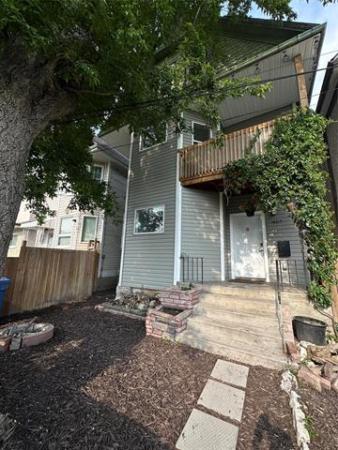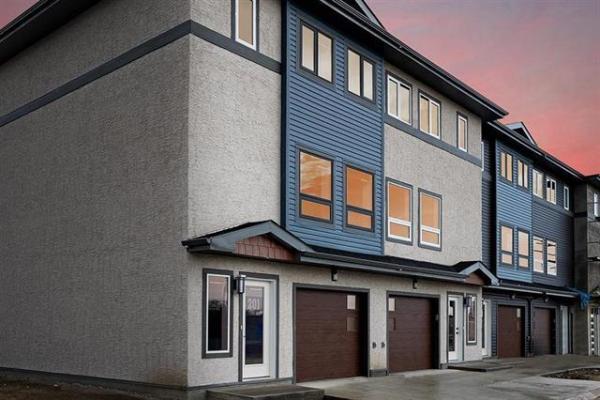Question: I’m a homeowner in Wolseley and I have a stone foundation. There’s some seepage, even after I had the eavestroughs replaced, sump pump and backwater system installed and built up the soil around my house. I don’t have any structural issues but I have had mice. I’ve contracted with a local contractor to install interior weeping tiles. They have recommended an interior membrane to drain any seepage. I am thinking of getting foam insulation sprayed on the stone walls to seal and insulate as well as provide an interior water seal. A friend advised me not to do this as it doesn’t let the walls "breathe." Is this warning worth taking into account and going with the interior membrane and some other insulation instead? David Weller.
Answer: How to properly maintain and insulate a stone foundation is one of the most frequent questions I get, which not only comes up during typical pre-purchase inspections, but also in many inquiries such as yours from current homeowners. There are wide-ranging opinions on this topic and the somewhat recent use of blown-in foams for this purpose has widened the scope of the debate. I have my own opinion, no surprise there, but I will also elaborate on other points of view to help you make your decision.
The first order of contention is not the choice or use of blown-in foam for insulating the inside of your older stone foundation, but the installation of an internal weeping tile system. These systems, which collect excess rainwater and groundwater below the basement floor slab, instead of outside the foundation footing, are questionable for several reasons. My main concern with these systems is that they collect excess water once it has already partially travelled through the foundation walls, which does nothing to protect it from the water. The water is only channelled away to a sump or floor drain catch basin to help keep the basement dry, while the stone and mortar may remain wet.
The old stone, which is quite porous if not waterproofed at the exterior, will continue to be constantly wetted after rains and snow melts, potentially causing deterioration from freeze/thaw cycles. Even worse, the old mortar in between the stones will definitely wear away if it remains continually damp. This mortar is critical in maintaining the structural integrity of the foundation and if it freezes while it is soaking wet, it can expand and crumble. Ensuring any old mortar that is loose or deteriorated is removed and replaced from the inside of the foundation before any further work is done is fundamentally important.
That is why I am not a fan of internal weeping tile systems. Gathering the soil moisture after the foundation stone and mortar have become soaked is the wrong approach. The reason that a waterproofing membrane has been suggested for the inside of the foundation to grade, is to help any water that does come through the foundation drain to the new weeping tile before evaporating into the basement air, or wetting any insulation against the foundation walls. While the use of this semi-rigid material for this purpose is quite resourceful, it is in the wrong location. The proper method for prevention of a wet basement is to stop the foundation from getting saturated in the first place. To accomplish that, the exterior of the foundation must be excavated to the bottom, the mortar and parging patched, and damp-proofing or a waterproof membrane installed. In this better method, weeping tile can be installed just outside the bottom of the foundation and channelled through to a sump pit under the basement floor slab.
So why is an internal weeping tile and membrane system recommended by various contractors if it is a substandard method for keeping a basement dry? The simple answer is that it is much easier to install, and consequently less costly for the homeowner. While it may be a lot of messy work to cut the concrete basement floor slab around the perimeter inside the foundation walls to install the plastic drainage piping, it is not nearly as difficult as installing it outside. The outside repair will require complete excavation and bracing of the soil for approximately one metre to allow access. This is normally with shovels, which is extremely labour intensive and costly. Many older homes in your area have minimal room between houses or outbuildings, making exterior repairs even more tricky. Also, very badly deteriorated stone foundations can be further damaged when excavating, if proper measures are not taken to prevent movement when the soil is disturbed. Regardless, that is the way to go, in my opinion.
To more directly address your question, a couple of the concerns with using blown-in polyurethane foam to insulate the inside of the stone are moisture and mould. If the foundation continues to get wet, the plastic foam insulation may not become damaged, but any small voids or gaps between it and the foundation can collect water. This may not easily drain or dry due to the foam and mould will surely develop. As well, some knowledgeable building authorities suggest that this type of insulation can keep the stone foundation colder, longer, creating better conditions for freeze/thaw moisture damage. For that reason, they suggest leaving the inside of the foundation uninsulated, thus warming the stone and preventing freezing.
My opinion regarding wet foundation repairs, including older stone foundations, is that exterior excavation and waterproofing is the proper method. That will ensure that the stone and mortar remain dry year-round, which will allow any type of insulation installed on the inside to properly do its job, without worrying about mould moisture and structural issues. In that scenario, I see no reason not to install high-density, blown-in polyurethane foam directly to the inside of the stone, once the foundation is dry.
Ari Marantz is the owner of Trained Eye Home Inspection Ltd. and the past president of the Canadian Association of Home & Property Inspectors — Manitoba (cahpi.mb.ca). Questions can be emailed to the address below. Ari can be reached at 204-291-5358 or check out his website at trainedeye.ca.
trainedeye@iname.com



